Top 9 Dogwoods for Vibrant Summer Blooms
Recently, I became the proud owner of a stunning Cornus ‘Norman Hadden’ in my new garden. This multi-stemmed beauty stands around 3 meters tall and is currently adorned with creamy yellow-white bracts that transition to pure white and then to a soft pink. In the autumn, the leaves transform into a rich burnt orange, complemented by round red fruit. The bracts (which are modified leaves) provide longevity, making this plant a true standout.
While it’s not advisable to plant dogwoods at this time (the optimal period is from November to March during dormancy), this is the perfect moment to explore your options. Given that they thrive in my slightly acidic soil, I plan to add more varieties to my garden.
Commonly known as dogwood, the genus Cornus has a fascinating history; it was initially called ‘dagwood’ because its straight stems were utilized to create daggers and arrows, evolving into its current name over time. The fruits also have unique names, known as houndberries or dogberries.

The cornus species often referenced is Cornus sanguinea, known for its vibrant crimson red stems that add a stunning touch to winter gardens. Numerous wonderful varieties exist, celebrated for their colorful stems in shades of red, golden yellow, coral, and even black. Besides, there are impressive larger species, including my C. ‘Norman Hadden’, a hybrid from the Americas and eastern Asia, which reaches the size of a large shrub or small tree.
These dogwoods are excellent choices for their summer spectacle and brilliant autumn hues. Although their bark may not be as captivating as those known for their colorful stems during winter, they frequently possess interesting textures and mottlings. The bark of the cornelian cherry (C. mas) flakes away, unveiling a warm undertone that enhances its appeal as a specimen plant.
Most flowering dogwoods are low-maintenance, as long as you steer clear of overly dry or wet alkaline soils. Ideally, they thrive in neutral to acidic soil. When planting, it’s beneficial to incorporate plenty of well-decomposed manure and compost and to apply mulch regularly. A sheltered location, ideally protected from strong winds, will also enhance their growth.
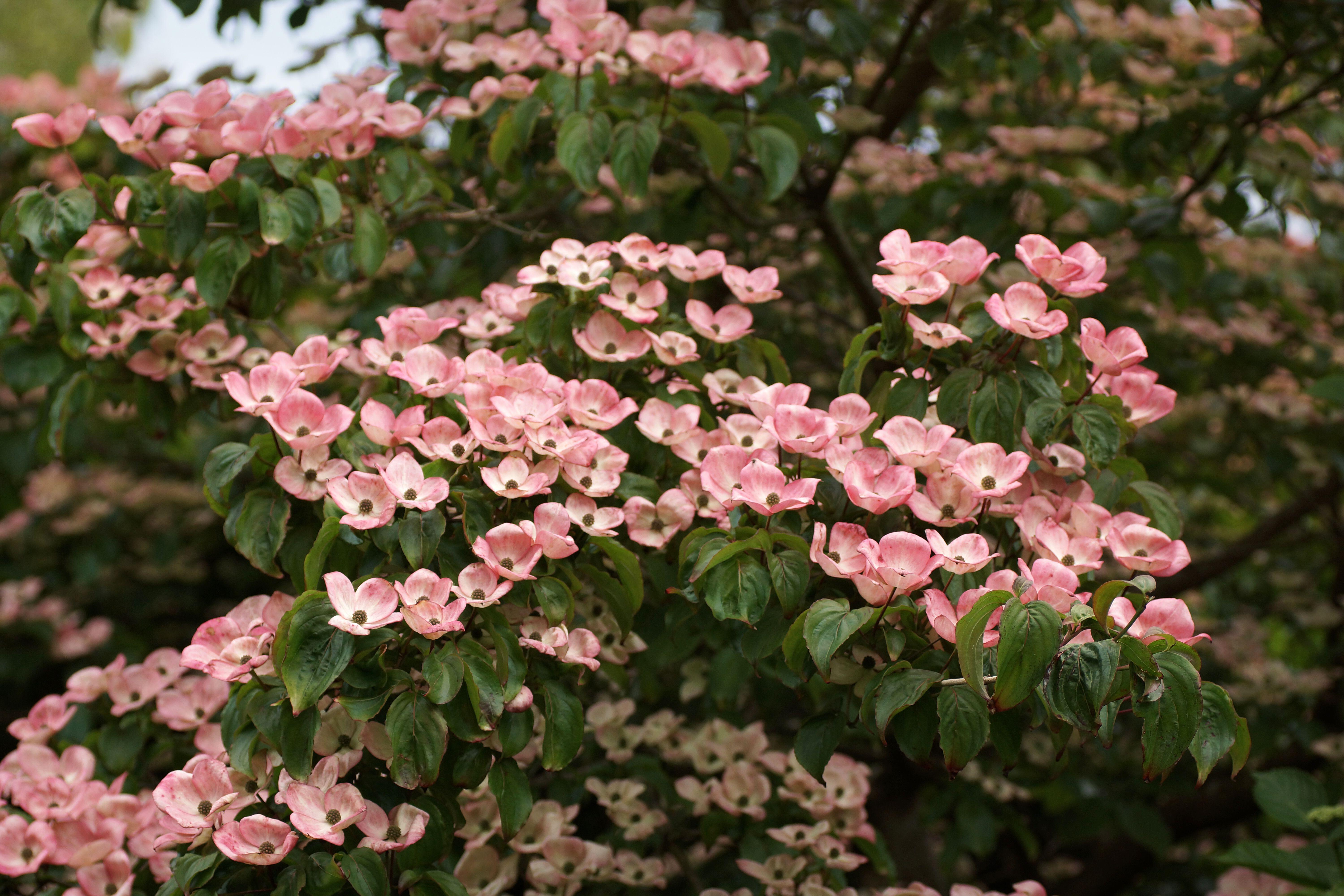
Top 9 Dogwoods Recommended
C. kousa var. chinensis (Chinese Dogwood)
A visually striking choice that’s widely available, this tree is a worthy addition to any garden. With beautiful spring flowers (bracts), vibrant autumn colors, and red fruits, it flourishes best in fertile, neutral to acidic soil. Height: 7m x Spread: 5m.
C. kousa ‘China Girl’ (Chinese Dogwood)
Gaining popularity at nurseries, this upright variety presents silky-smooth creamy yellow bracts, orange-red autumn leaves, and pink-red fruits. Height: 4m x Spread: 3m.
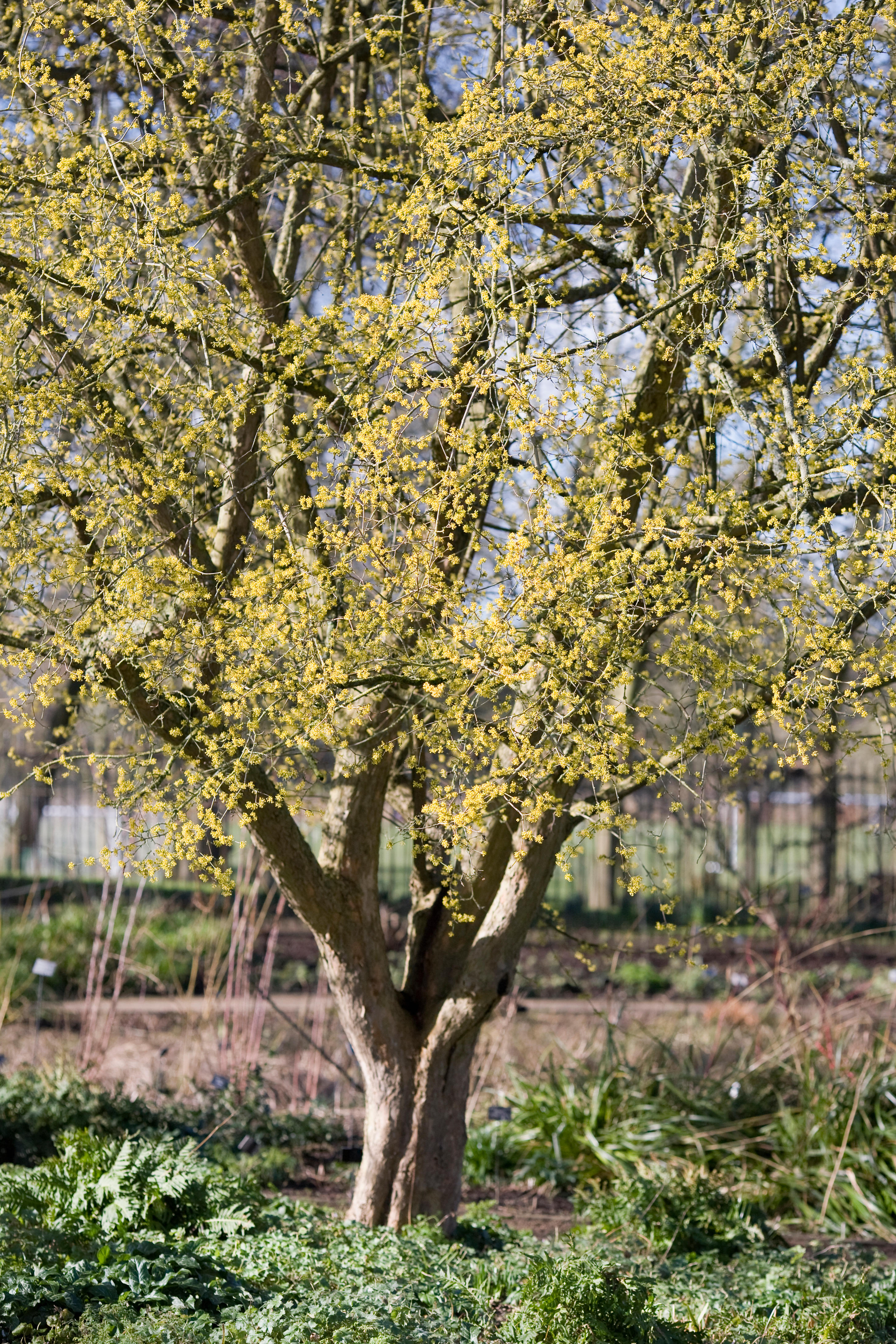
C. mas (Cornelian Cherry)
More of a small tree than a shrub, it features cheerful yellow flowers in early spring, excellent autumn colors, and berries simultaneously. Its bark flaking reveals a warm undertone, maintaining interest even during winter. Height: 5m x Spread: 5m.
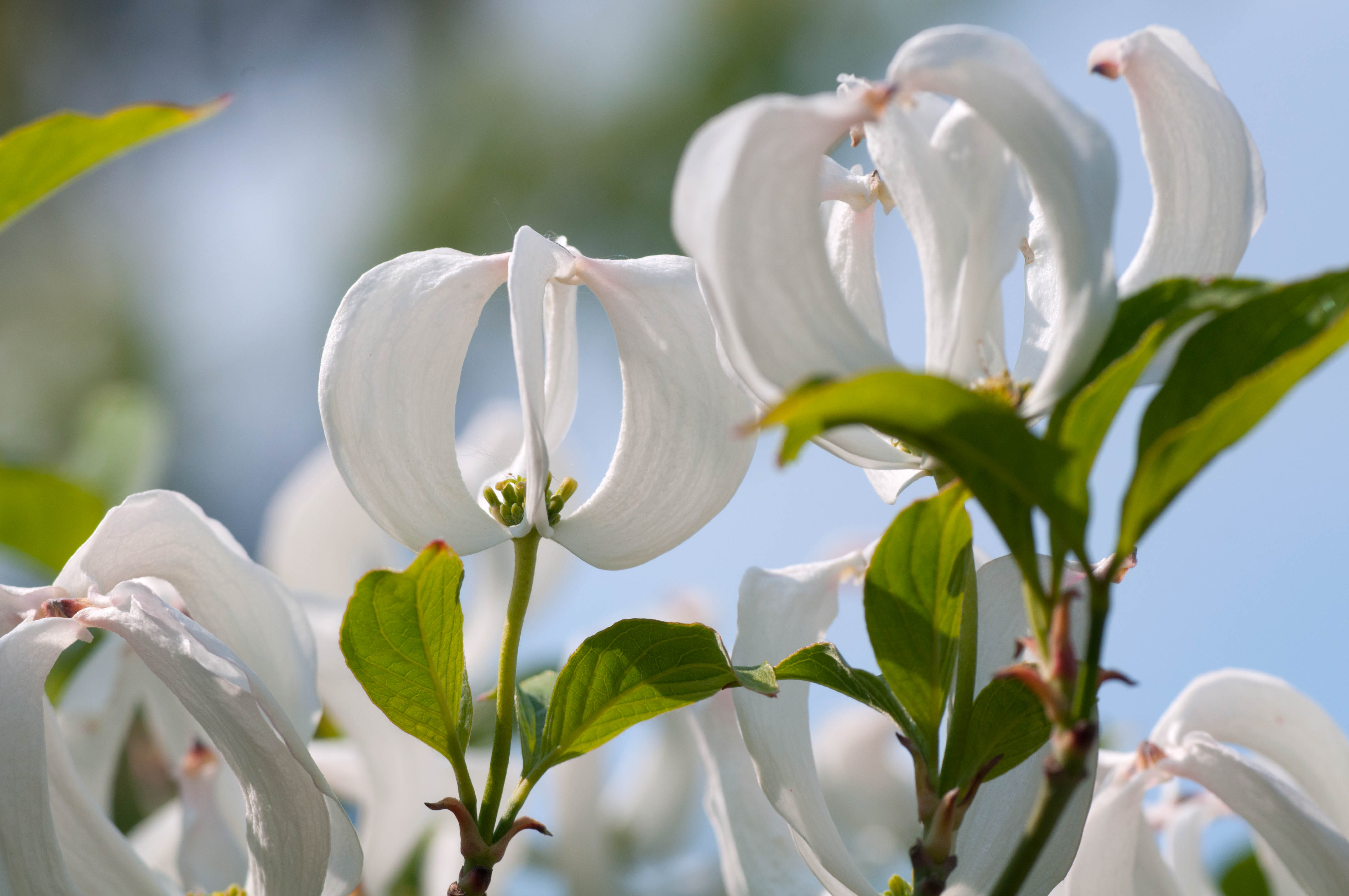
C. florida ‘Cloud Nine’ (North American Flowering Dogwood)
This compact variety showcases classic features, including white bracts, lovely autumn color, and berries, making it ideal for smaller gardens. It reaches a size of approximately 3m x 3m.
C. controversa (Wedding Cake Tree)
A breathtaking tree that demands ample space due to its horizontal, tiered growth. It showcases white elder-like flowers in June, followed by black fruits. Height: 15m x Spread: 15m. The ‘Variegata’ variety remains smaller, around 8m x 8m, and looks stunning against darker green backgrounds.
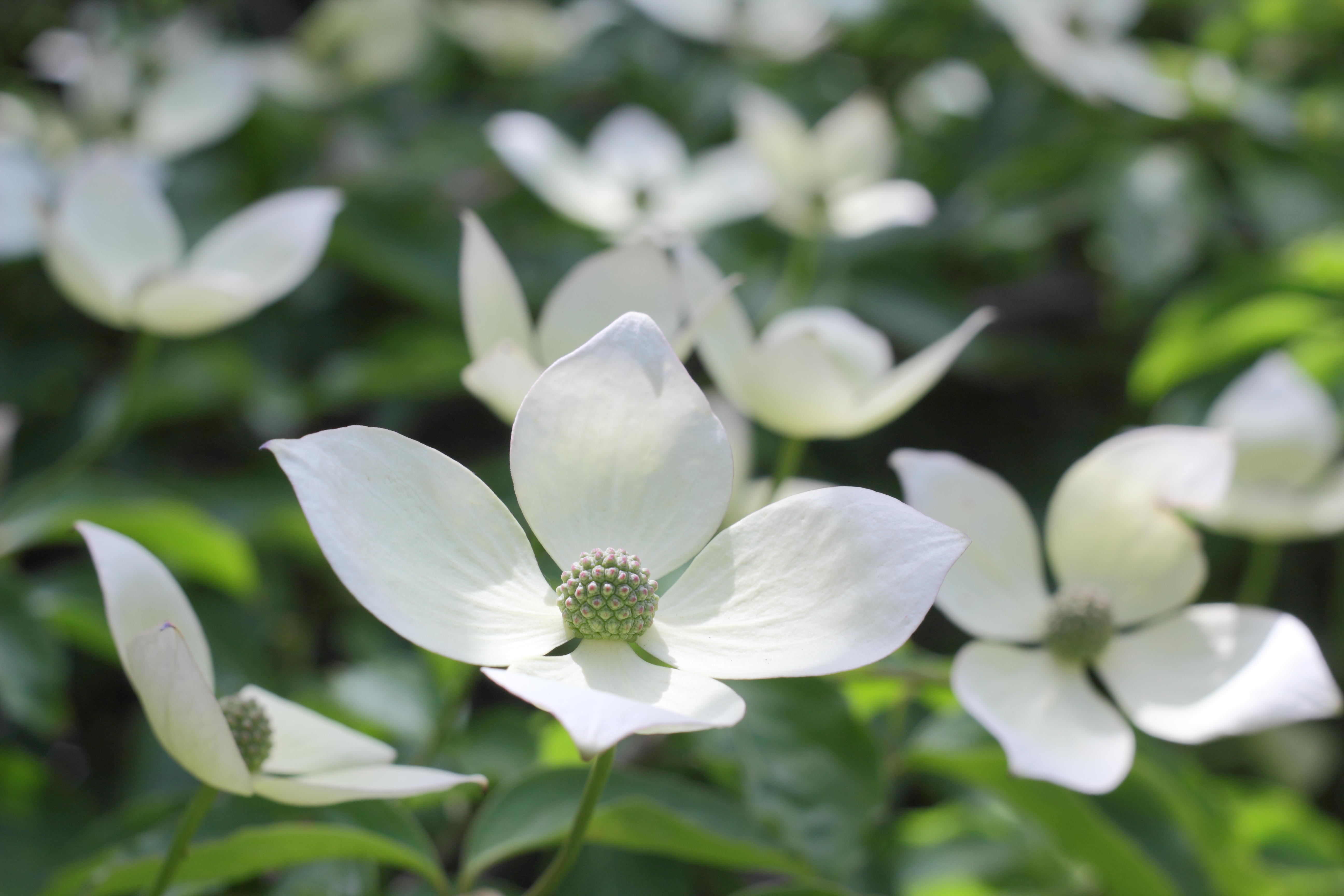
C. ‘Norman Haddon’
This large flowering semi-evergreen hybrid retains its foliage during mild winters. With dark green leaves that transform into warm red in autumn, it displays creamy white bracts that turn pink in late summer, along with attractive fruit.
C. kousa ‘Miss Satomi’
If you’re looking for a non-white option, this prolific flowering shrub produces numerous rose pink bracts from June to July. It’s perfect for fan-training against warm walls, adding elegance to border plantings. Height: 5m x Spread: 4m.
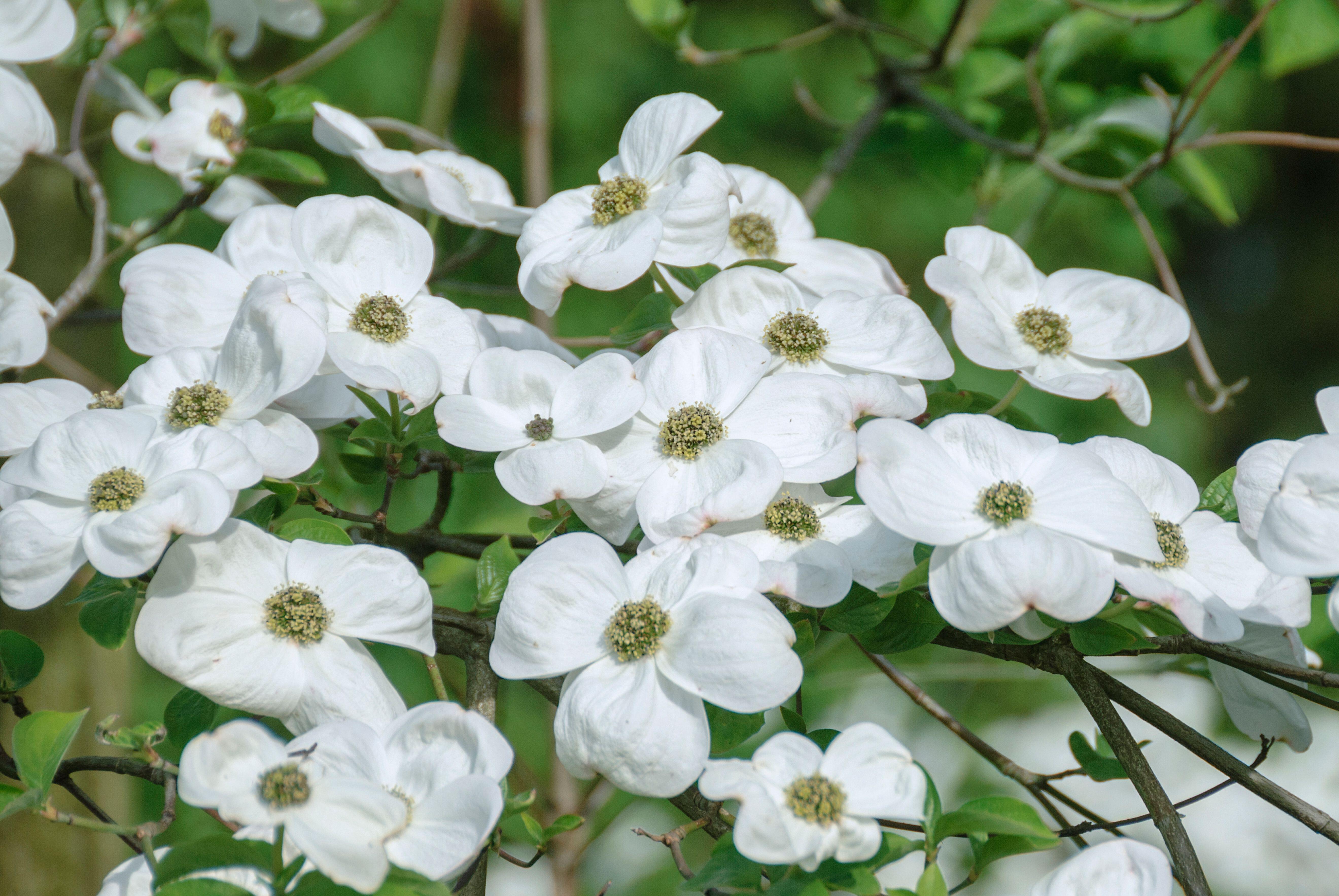
C. nuttallii ‘Ascona’ (Pacific Dogwood)
This small tree is a hybrid between C. florida and C. nuttallii, boasting a rounded crown of large white flower bracts (occasionally flushed pink) that bloom in June or July, accompanied by fine purple-red autumn foliage and purple stems in winter. Height: approximately 6m x Spread: 7m.
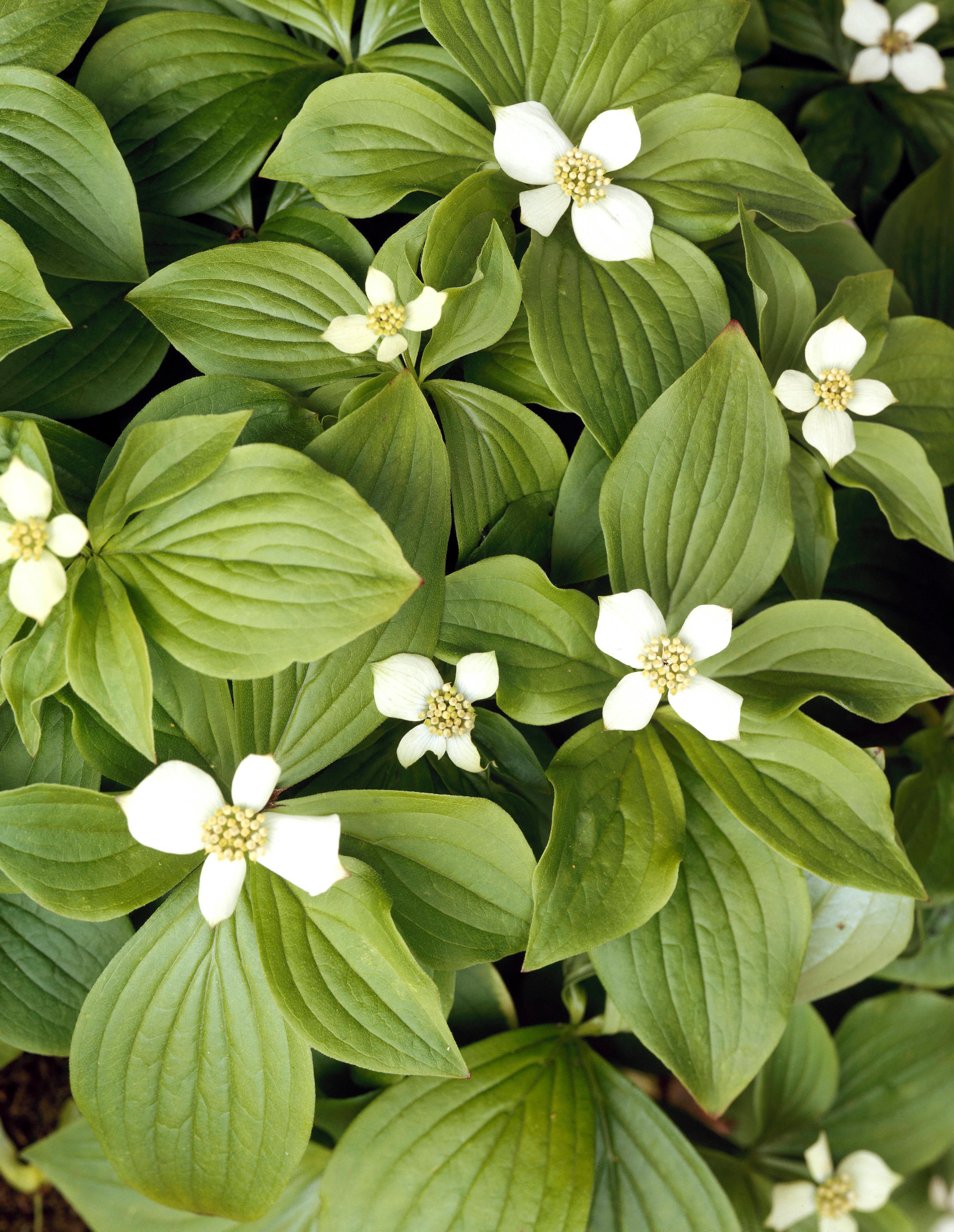
C. canadensis (Creeping Dogwood)
This variety is a delightful low-growing evergreen groundcover featuring white bracts and vibrant mid-green leaves. It thrives in shaded areas with moist, humus-rich, neutral to acidic soil. Height: 15cm x Spread: 1m.




Post Comment